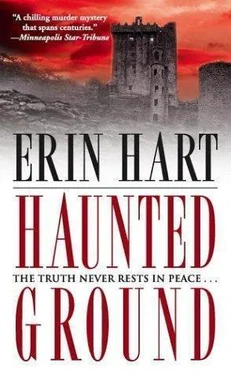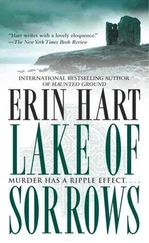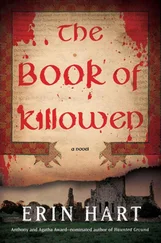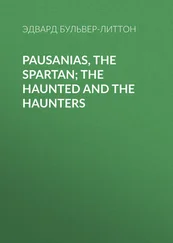It was late afternoon before the scene-of-crime officers arrived. The gray day had grown more overcast and a soft rain had begun to fall. There was a mechanical quality to the work entailed at a crime scene, what to Devaney always seemed a small amount of comforting routine in the face of horror. He stood in the woods near O’Flaherty’s Tower, surrounded by a drone of activity: scene-of-crime officers in their white suits, and policemen in yellow rain gear. The fire brigade had succeeded in dousing the flames last night, but the tower had been reduced to a blackened and empty shell, with a few stout timbers high up that had partially withstood the blaze. Even in the rain, small plumes of smoke still wafted from the rubble, a dangerous mixture of fallen stones and charred, splintered wood. In daylight it was readily apparent where the firemen had trampled through the thick undergrowth, and the bright green of the rain-slick leaves leapt out against the tower’s blackened bulk.
The boy had said, They’re here. However, if there was some sort of underground chamber in the tower, the entrance was well hidden, and Devaney wasn’t surprised that no one had discovered it during previous searches. Once they’d cleared the rubble from inside the tower, the dirt floor was solidly packed, and showed no evidence of having been dug up. Likewise, the team could find no areas of disturbed earth around the building’s perimeter. Why should it be easy? Devaney thought. Every way into this case had been a hard road; why should this, even though it seemed the final step, be any bloody different? He was feeling the raw, edgy effects of too many hours without sleep, but couldn’t force himself to leave. Even when the passage had not been located by nightfall, he stayed and watched the team press on under the glaring white of the floodlights. When daybreak came, they switched off the lights. The sky had cleared, but they still had found nothing.
At midmorning, a police vehicle pulled up on the roadside near the tower. Molloy, the young officer he had placed outside Hugh Osborne’s room, approached.
“It wasn’t my idea, sir. He insisted.”
“Who is it, Molloy?”
“Osborne, sir. Dr. Maguire and Dr. Gavin are with him.”
Devaney watched as the three passengers emerged from the car. The effects of his fall were evident in the careful way Maguire moved, but he was trying to put on a good front. Beside him, Osborne also moved slowly, not from any apparent physical injury, but like a man mesmerized. He looked only at the white-garbed officers as they went about their work. Dr. Gavin followed behind the two men; her dubious expression told Devaney what she thought of this impromptu expedition. He stepped in front of them.
“I’ll have to ask you not to go any farther just now,” Devaney said. Hugh Osborne just looked at him blankly.
“We’ll stay right here,” Maguire said, “if that’s acceptable.”
Devaney nodded, then pulled Dr. Gavin aside. “Are they all right?” he murmured, tipping his head in Osborne’s direction.
“Neither of them should really be up and about, but they wouldn’t stay in the hospital. Cormac insisted on telling Hugh what Jeremy said. I tried to convince him that it might not be a good idea. Hugh Osborne is still your chief suspect, isn’t he?”
“Unless we find evidence to the contrary. But we’re not making much headway here.”
Maguire approached and spoke in a low voice: “If I might offer an idea?”
“By all means.”
“Well, it looks like your team is assuming the underground place and its entrance to be somehow connected to the tower. But people tend to build on the same places over and over again. It may very well be a souterrain or underground chamber left over from some previous settlement or fortification that’s older than the tower. Have you got a piece of paper or something?” When he’d got it, he hastily sketched the tower, and marked the locations of the various earthworks.
“We’re here.” He pointed to the spot on his crude map where he and Devaney stood, about twenty yards from the tower. “Do you see the area of raised earth all around us here? That’s where I’d begin, within that circle. The entrance is bound to be pretty well concealed. It might save time to use that ground-probing radar you mentioned, if you have access to some equipment.”
Osborne refused to leave the scene; he hovered, sometimes sitting quite still, sometimes standing beside the yellow tape the scene-of-crime unit used to mark the perimeter, but his silent presence did not appear to disturb the officers as they went about their methodical work. It wasn’t until midafternoon, when they’d got the loan of radar equipment from a surveying firm in Ballinasloe, that the team was able to make any progress. The readings showed a solid slab about four feet below the surface, within the circle Maguire had shown them. They called in earth-moving equipment, a small backhoe that trampled the vegetation in its path like some prehistoric beast. Fortunately, the operator was an artist, a man who could control the heavy steel excavation bucket as though he were measuring tea for the pot rather than a half ton of soil. The sound of metal scraping on stone came from the trench, and a voice said, “He seems to have hit something here, sir.” Devaney peered into the pit. He could see several large, flat stones. One of them suddenly gave way and collapsed into the chamber below, taking with it loose soil from the surrounding banks.
“All right,” Devaney shouted. “Hold up. That’s enough.” He sent one of the young Guards to fetch Maguire.
“You’ve more experience than we have with uncovering this sort of structure,” he said when the archaeologist arrived. “I wonder if you’d mind advising us on how to proceed.”
Dressed in a regulation white suit and mindful of his bruised ribs, Cormac climbed carefully down into the chamber while Devaney and the rest of the team remained at the edge of the excavation. At the bottom of the ladder, he switched on his torch and peered into the darkness. The walls were exquisite dry-stone construction, battered to support the heavy lintels. At the end nearest the tower, a slab of sandstone had been cut into an archway to support the roof. As he admired the workmanship of the builders who had put these stones in place more than a thousand years earlier, Cormac suddenly realized what a terrible contradiction existed if the bodies of Mina and Christopher Osborne were indeed hidden here. Souterrains were common enough features of ancient ringforts, but in addition to their function as storage vaults, they often served another particular purpose—to protect a settlement’s most vulnerable inhabitants: its women and children. The entrance creeps were often built purposely small so that a grown man could not fit through.
Everything he could see was covered with a thin layer of dust. He could smell putrefaction. As he slowly let his beam track across the small room, Cormac could see nothing but gray shadows and shapes. Wait. He turned his light back to where it had just been, and stared at the pattern that began to emerge. The eye is quick to detect the stamp of human presence in the seeming chaos of the natural world. Beneath the dust, half buried in soil and rubble, he had perceived the diamond motif and raised cable of an Aran sweater. He focused his beam on that spot, and the shapes began to make sense to his eye and mind. He could see a body lying on its right side, back toward him. Near the figure’s left hip, his eye began to comprehend the meaning of another form. It was the sole of a child’s tiny wellington. He turned to the company standing above him, and didn’t have to say a word. They could read what he had seen in his face.
Читать дальше











